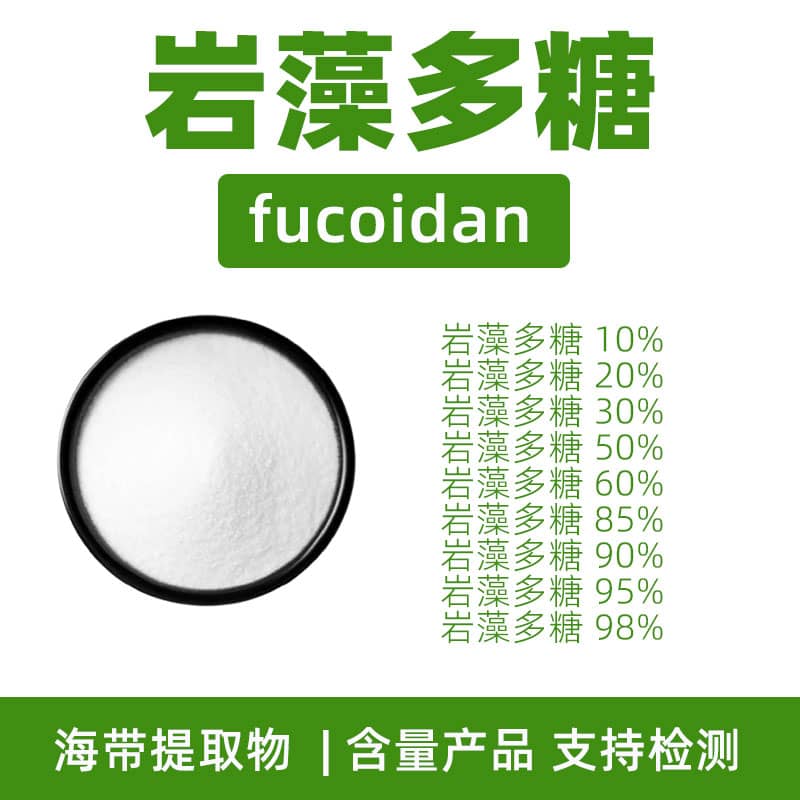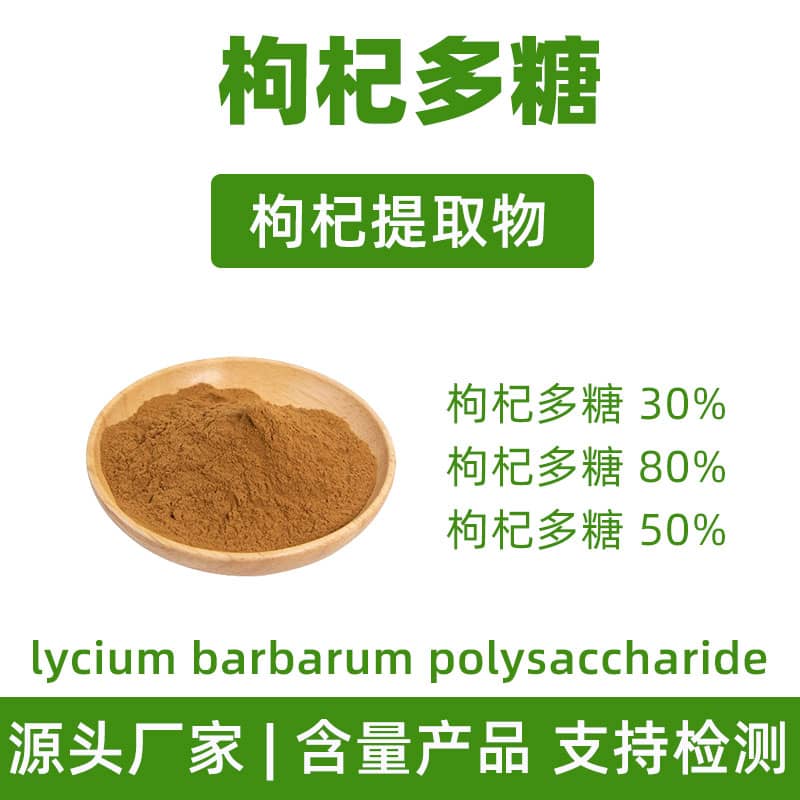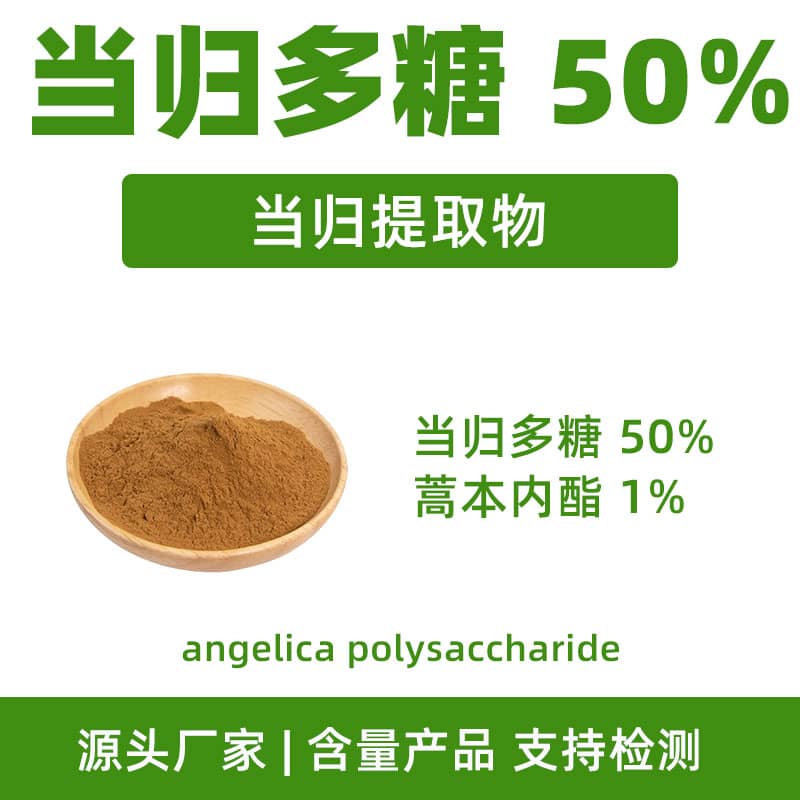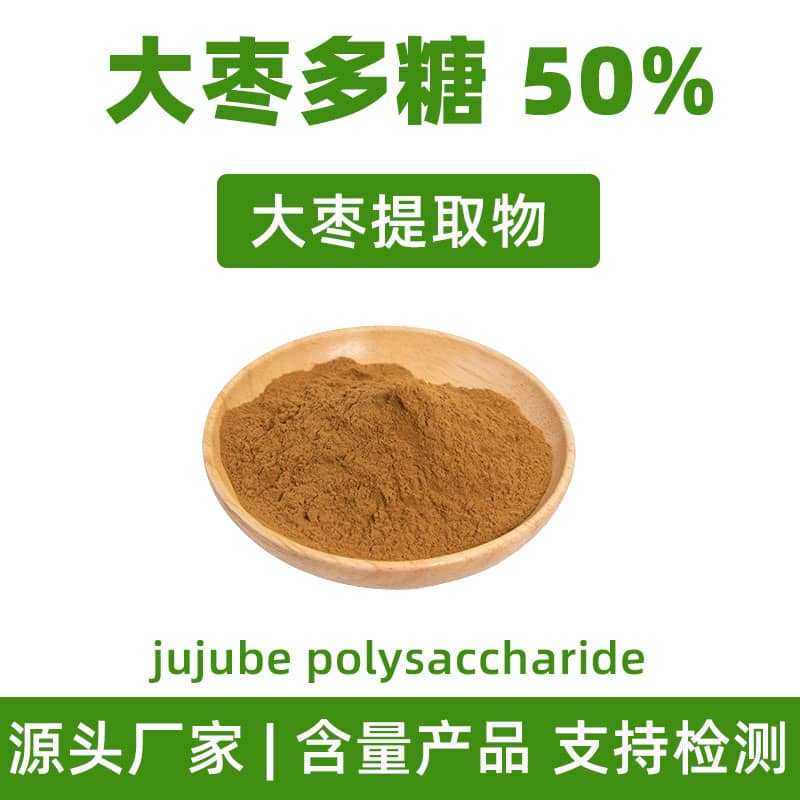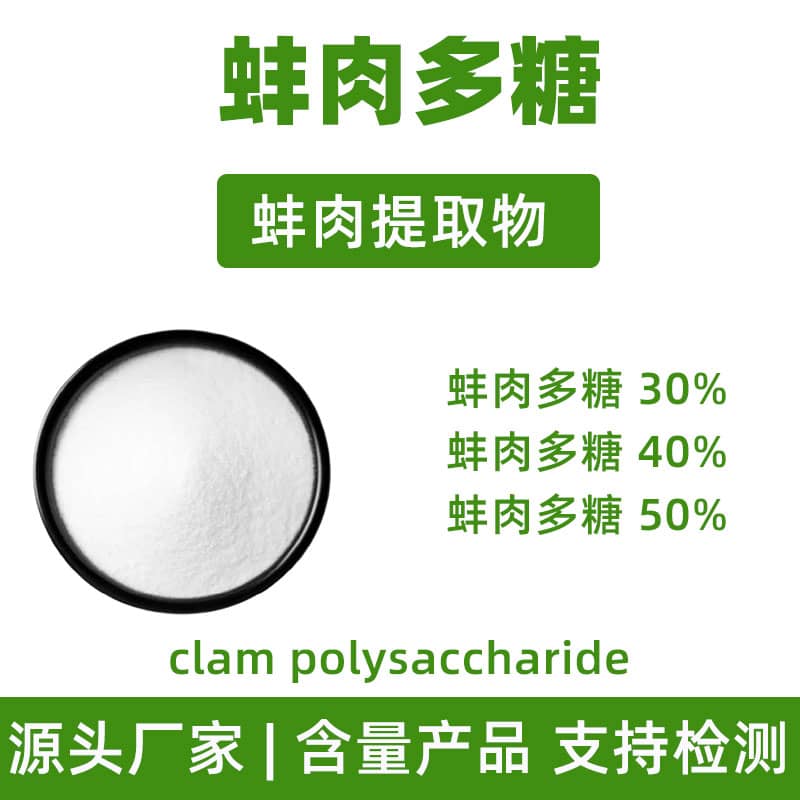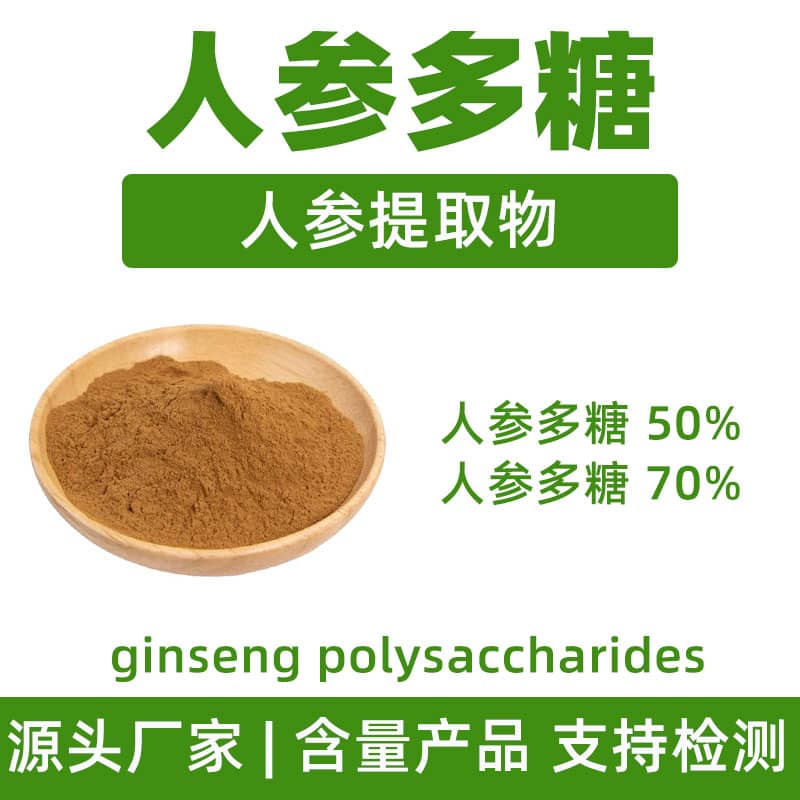Red Mushroom Polysaccharide Product Introduction
Red mushroom polysaccharide is a natural polysaccharide extracted from red mushrooms (Russula spp.), with a main ingredient of 30% polysaccharide. Red mushroom polysaccharide has rich biological activity and nutritional components, and is widely used in many fields.
Main Ingredients
The main ingredient of red mushroom polysaccharide is polysaccharide, including β-glucan and other sugars. These components have a good supportive effect on the body and are important ingredients in health products and functional foods.
Efficacy
Red mushroom polysaccharide has multiple effects, mainly including enhancing immune function, anti-oxidation, and supporting energy metabolism. Its biological activity plays a role in maintaining physical health and improving immune response. The antioxidant capacity of red mushroom polysaccharide helps to eliminate free radicals in the body, reduce potential damage caused by oxidative stress, and may also support the body's energy metabolism, helping to provide a stable energy source.
Application
Red mushroom polysaccharide is widely used in health products and functional foods. In the field of health products, it is often made into capsules, tablets, or powder to provide daily nutritional support. In functional foods, red mushroom polysaccharide is commonly used in nutritional drinks and health foods to enhance their overall nutritional value. The recommended dosage is usually 500-1000 mg per day, and the specific dosage is adjusted according to the product instructions and personal needs.
Red mushroom polysaccharide should be stored in a cool, dry environment and kept sealed to ensure its quality and effectiveness. Through reasonable use, red mushroom polysaccharide can effectively support health and nutritional needs.
Red Mushroom Polysaccharide Product Production Process
The production process of red mushroom polysaccharide includes several key steps to ensure the extraction of high-purity polysaccharides from red mushrooms. The following is the detailed production process:
1. Raw Material Preparation
Choose healthy red mushrooms (Russula spp.) as raw materials. The collected red mushrooms need to be thoroughly cleaned to remove surface soil and impurities. The cleaned red mushrooms need to be dried, usually by hot air drying or low-temperature drying methods, to reduce moisture content and facilitate subsequent processing.
2. Crushing and Grinding
The dried red mushrooms will be crushed into coarse powder. Through further grinding, they are ground into fine powder to increase the surface area and improve extraction efficiency. This step helps to make the subsequent extraction process more efficient.
3. Extraction
Mix the ground red mushroom powder with an appropriate solvent (such as water or dilute alcohol). Under the conditions of heating and stirring, extraction is carried out, usually using hot water extraction or cold extraction methods. The temperature and time of the extraction process need to be precisely controlled to ensure the maximum extraction of polysaccharides while preventing the loss of active ingredients. The extraction solution is filtered multiple times to remove undissolved solid impurities and obtain a clear extraction solution.
4. Concentration
The filtered extraction solution is concentrated by vacuum concentration equipment to remove the solvent and concentrate it into a viscous liquid. The concentration process needs to be carried out at a low temperature to avoid thermal degradation of the polysaccharides. This step increases the concentration of polysaccharides to the expected level of 30%.
5. Purification
The concentrated solution is further purified to remove proteins, pigments, and other impurities. Common purification methods include precipitation and ion exchange. Through these methods, unwanted components can be removed and the purity of the final product can be increased.
6. Drying
The purified polysaccharide solution is converted into powder by spray drying or freeze-drying methods. The spray drying process is completed at high temperatures, while freeze-drying is carried out at low temperatures. Both can effectively retain the activity and stability of the polysaccharides.
7. Screening and Packaging
The dried polysaccharide powder is screened to ensure uniform particle size. Finally, the powder is packaged in sealed containers and stored in a cool, dry environment to maintain its quality and effectiveness.
The above process steps ensure the high purity and biological activity of red mushroom polysaccharide, providing high-quality raw materials for health products and functional foods.
Efficacy and Side Effects of Red Mushroom Polysaccharide
Red mushroom polysaccharide is a natural polysaccharide extracted from red mushrooms (Russula spp.), which has multiple biological activities and potential positive effects on health. The following are the main effects and functions of red mushroom polysaccharide, as well as possible side effects.
Efficacy and Function
1. Immune Support
Red mushroom polysaccharide plays a certain role in improving immune system function. Its polysaccharide components can help enhance the body's immune response and improve the body's ability to resist external threats. Polysaccharides may support the normal operation of the immune system by stimulating the activity of immune cells, thereby helping to maintain the body's healthy state.
2. Antioxidant Effect
Red mushroom polysaccharide has significant antioxidant properties. It can neutralize free radicals in the body, reduce oxidative stress damage to cells, protect cells from oxidative damage, support the body's natural antioxidant mechanism, and promote overall health.
3. Energy Support
Red mushroom polysaccharide may support energy metabolism to some extent. By providing a stable energy source for the body, it helps maintain normal metabolic function and physical level. This makes red mushroom polysaccharide a beneficial supplement, especially suitable for people who need additional energy support.
4. Digestive Health
Some components of red mushroom polysaccharide help maintain digestive system health. They may support the balance of good flora in the gut, thereby improving digestive function. Although the specific mechanism still needs further research, the benefits of polysaccharides in promoting digestive health have received some attention.
5. Skin Health
Red mushroom polysaccharide also shows potential benefits for skin health. Due to its antioxidant and moisturizing properties, it may nourish and protect the skin. When used in skincare products, red mushroom polysaccharide can help improve skin elasticity and gloss, promote skin health.
Side Effects
1. Allergic Reaction
Although red mushroom polysaccharide is a natural ingredient, individual users may be allergic to its components. Pay attention to observe whether there are allergic symptoms such as skin redness and itching before use. If these reactions occur, stop using immediately and consult a doctor.
2. Digestive Discomfort
In some cases, red mushroom polysaccharide may cause mild digestive discomfort, such as bloating or mild diarrhea. These reactions are usually mild, and adjusting the dosage and frequency of use may help relieve discomfort.
3. Interaction with Drugs
Although red mushroom polysaccharide is generally considered safe, attention should still be paid to the interaction with other drugs during use. Especially when using other health products or drugs at the same time, it is recommended to consult a doctor or professional to ensure safety and effectiveness.
Summary
As a natural polysaccharide, red mushroom polysaccharide has multiple effects such as immune support, antioxidant, energy support, digestive health, and skin care. However, individual users may experience allergic reactions or mild digestive discomfort. Reasonable use and consultation with professionals when discomfort occurs can maximize its health support effect.
Application Scenarios and Usage of Red Mushroom Polysaccharide
Red mushroom polysaccharide has a wide range of applications in the fields of medicine, food, and cosmetics. The following is a detailed introduction to its main application scenarios, usage, and dosage.
Medical Field
Application
In the medical field, red mushroom polysaccharide is often used in health products. Its immune support and antioxidant properties make it a key component of some health supplements. Red mushroom polysaccharide may enhance the body's natural defense system by enhancing immune function, improving physical strength and anti-fatigue ability.
Usage and Dosage
Usually, red mushroom polysaccharide is used as a health product, with a daily recommended dose of 500-1000 mg. The dosage can be adjusted according to individual health status and needs. It is generally recommended to divide it into two or three doses to improve absorption efficiency. When using, follow the instructions on the product label or under the advice of a professional physician.
Food Field
Application
In the food field, red mushroom polysaccharide can be used as an additive for functional foods. Its main functions include improving the nutritional value of food, enhancing the antioxidant capacity of food, and improving the taste and texture of food. For example, red mushroom polysaccharide is often added to health drinks, energy bars, and nutritional supplements.
Usage and Dosage
In food formulas, the addition amount of red mushroom polysaccharide is usually 0.5%-2% of the total product. The specific dosage depends on the product type and expected function. When preparing health drinks, adding 10-20 mg of red mushroom polysaccharide per bottle of drink is a common practice. For energy bars and nutritional supplements, the addition amount can be appropriately increased to ensure the expected nutritional effect.
Cosmetic Field
Application
In the cosmetic field, red mushroom polysaccharide is used in skincare products and beauty products. Its antioxidant and moisturizing properties make it an effective ingredient in face creams, essence lotions, and face masks. Red mushroom polysaccharide can help improve skin moisturizing ability, increase skin elasticity and gloss, and provide soothing and protective effects.
Usage and Dosage
In cosmetic formulas, the concentration of red mushroom polysaccharide is usually 0.5%-2%. For example, in face cream, 0.5-1 gram of red mushroom polysaccharide can be added per 100 grams of product. In essence lotions and face masks, the concentration can be adjusted according to the specific formula of the product. When using, follow the instructions on the product label for application, and it is generally recommended to use once or twice a day to achieve the best effect.
Comprehensive Use Suggestions
Health Products
When using red mushroom polysaccharide health products, it is recommended to use according to the recommended dosage and pay attention to healthy diet and lifestyle to obtain the best health care effect. If you have any discomfort or health problems, consult a doctor.
Food
When using red mushroom polysaccharide in food formulas, it is recommended to adjust the addition amount according to the specific formula requirements. In order to ensure the quality and effect of the product, it is recommended to conduct stability testing and suitability assessment.
Cosmetics
When using red mushroom polysaccharide in cosmetics, pay attention to the product formula and skin type to avoid possible allergic reactions. You can test on a small area before use to ensure the safety and effectiveness of the product.
Storage
Red mushroom polysaccharide should be stored in a cool, dry environment, away from sunlight and humidity, to maintain its activity and stability.
Through reasonable use and application, red mushroom polysaccharide can play its effective role in the fields of medicine, food, and cosmetics, supporting health and beauty needs.
Introduction, Distribution, and Growth Environment of Red Mushroom (Russula spp.) Source Plants
Introduction, Distribution, and Growth Environment of Red Mushroom (Russula spp.) Source Plants
1. Introduction of Source Plants
Red mushroom (Russula spp.) is an edible fungus belonging to the Basidiomycota, Russulaceae family. There are many different species under its genus, among which red mushroom (Russula emetica) and red top mushroom (Russula vesca) are common. The characteristic of red mushroom is that the umbrella cover is mostly red or pink, and the edge usually has obvious villous structure, with a thick and short stipe. The surface of the cap is smooth or slightly villous, and the color changes from red to pink. The flesh of the red mushroom is thick and delicious, and it is regarded as a delicious edible fungus in some areas.
2. Distribution
Red mushrooms are widely distributed and mainly found in temperate and subarctic regions. They are widely distributed in the forest areas of the Northern Hemisphere, including Europe, North America, and Asia. Red mushrooms usually grow under coniferous and broad-leaved forests, especially under pine, fir, and oak trees. In China, red mushrooms have been found in the northeast, north, and northwest regions, especially in humid forest areas. In North America, red mushrooms can also be found in forests in Canada and the United States.
3. Growth Environment
Red mushrooms have certain requirements for their growth environment, mainly including the following aspects:
- Soil Type
Red mushrooms usually grow in acidic soil rich in humus. These soils are usually rich in organic matter, well-drained, and can provide a suitable growth environment for red mushrooms. The pH value range of the soil for red mushroom growth is usually 4.5 to 6.0.
- Humidity and Precipitation
The environment where red mushrooms grow is usually humid, with sufficient precipitation. Suitable humidity and frequent precipitation can provide the moisture required for red mushroom growth, thereby promoting its healthy growth. In dry seasons, the growth of red mushrooms may be limited, so the yield and quality of red mushrooms are often higher in humid seasons.
- Temperature
The suitable temperature range for red mushroom growth is usually 10°C to 20°C. The growth rate of red mushrooms will slow down in warm summers and cold winters. The most suitable growth temperature is in spring and autumn, when red mushrooms grow fastest and have the best quality.
- Light
Red mushrooms usually grow in cool places in the forest and can tolerate low light environments. They rely on forest cover to maintain environmental humidity and suitable temperature, so they are more common in the understory of forests and in the shade of trees.
4. Ecological Role
Red mushrooms play an important ecological role in their growth environment. As a mycorrhizal fungus, red mushrooms form a symbiotic relationship with the roots of trees, helping trees absorb minerals and water from the soil. At the same time, red mushrooms also participate in organic matter decomposition in forest ecosystems and promote nutrient cycling. Their existence is of great significance to the health and stability of forest ecosystems.
5. Economic Value
Due to the unique flavor and nutritional value of red mushrooms, they are picked and sold as edible fungi in some areas. The market demand for red mushrooms is relatively high in some countries, especially in their local distribution areas. Red mushrooms are also used to extract polysaccharides and other active ingredients, which have a wide range of application prospects in health products and functional foods.
Summary
Red mushroom (Russula spp.) is an edible fungus widely distributed in temperate and subarctic forests, with important ecological and economic value. Its growth environment includes acidic soil rich in humus, humid climate, and suitable temperature conditions. In forest ecosystems, red mushrooms not only form symbiotic relationships with trees but also play a role in organic matter decomposition and nutrient cycling. By understanding the growth environment and ecological role of red mushrooms, their potential value in health products, food, and other fields can be better utilized.
Red Mushroom Polysaccharide Processing and Storage
The processing and storage of red mushroom polysaccharide are key steps to ensure its quality and effectiveness. During the processing, red mushroom polysaccharide usually goes through several steps such as cleaning, drying, crushing, extraction, concentration, and purification to extract and concentrate its active ingredients. Each step needs to strictly control conditions such as temperature, humidity, and time to maintain the stability and biological activity of the polysaccharide.
In terms of storage, red mushroom polysaccharide should be stored in a cool, dry, and light-shielded environment to prevent moisture and sunlight exposure, which helps prevent its degradation and maintain its effect. The ideal storage conditions are usually a temperature of 15°C to 25°C and a humidity of less than 60%. Using sealed containers for storage can further protect the product from external environmental influences and ensure its long-term stability and efficiency. Regularly checking storage conditions and product status is also an important measure to maintain its quality.
Monica Sun is a seasoned expert in the plant extraction industry with over a decade of experience in research and production. She specializes in the extraction and purification of plant active ingredients, focusing on driving innovation in natural product applications. Monica has participated in the development of multiple functional plant extracts, delivering high-value natural raw material solutions for the health food, pharmaceutical, and dietary supplement sectors.









